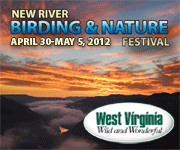On New Year's Eve, Phoebe, Liam, and I were texting about remembering to notice our first bird of 2025 the next morning. Liam was already back in Columbus, but Phoebe and Oscar were still here with me in Whipple. Liam got very excited about going to an actual birding place on New Year's Day and trying to see a really cool bird. A birding co-worker had told him about Pickerington Ponds Metropark south of Columbus, which is the only place I've ever seen sandhill cranes in breeding season in Ohio. Oh, YES. Go there, Liam and Ayla! Go there!
(Sadly, they were not as well protected from cold on New Year's Day as they were the day before Thanksgiving, when we went to see cranes in Indiana! Didn't have me there with the giant duffel full of Michelin Man down parkas...)
I was at Pickerington Ponds in February, 2016, and it was fulla ducks and I'm almost sure the cranes were there as well. If you look hard you can see some ducks flying over this beautiful barn, a signature sight at the park.
So he and Ayla climbed in the car, innocent of binoculars or field guide, because they don't own either. I was of course writhing with frustration, but there was nothing I could do about it from two hours away. Believe me I was tempted to drive up with the right gear. My boy wants to bird? I am ON that like Bluebonnet!
I knew they'd have fun with the water and the open sky, and I figured they'd see something cool, binoculars or none.
It wasn't long before I got a call. "Ma? We're looking at some ducks with a white spot on the head. Do you know what they might be?"
Well, they could be several things, this time of year. Buffleheads. Goldeneyes, for two. Liam said he thought the white spot was behind the eye. OK, that narrows it down...
"Can you take even a horrible cellphone photo of them?"
I got these a few minutes later, just what I'd asked for.
Ayla had thought to bring a small astronomical telescope, hand-held, and she somehow held her phone up to its eyepiece and got...something. But in this one I could eke out enough to figure out what they were.
I studied the photos. "Am I seeing cocked tails here?"
"Yes!" Liam answered. "Their tails are cocked!"
I fired back with some shots of my Sibley guide, opened to the pages I knew had the answer.
When Liam realized the mystery birds were hooded mergansers, his excitement knew no bounds. "That's so COOL!!" he kept exclaiming.
It IS so cool! I could have gone to Pickerington Ponds with Liam and Ayla, and shown them those mergansers through a proper telescope, and I'm sure they'd have been pleased. The whole difference was that he and Ayla found them themselves, had no idea what they were, were burning to know, and figured out how to get the information they needed to identify them. (call Ma).
I know damn well I was about three times as excited as they were. THIS!!
Phoebe was to drive up and have lunch with Liam on her way home with Oscar today, Jan. 5. So the second I hung up with Liam, I started making a birdwatcher's care package. First, of course, was a pair of 10 power Swarovski binoculars, one of my spares. (I find I carry the smaller, lighter 8 power).
I put a brand new bino bra on them, with a Zick-decorated leather shield.
Next was the field guide his dad and I had worked together on, with help from Phoebe's fourth-grade class focus group at Salem-Liberty Elementary. Why, that's Phoebe on the cover!
Bill wrote it, and I did many of the illustrations (My dear friend Mike DiGiorgio did lots of the western species).
I also wrote the WOW facts.
I included a lens cleaning kit for the binoculars, with a lens cloth with my photo on it. Phoebe had found this red-morph screech-owl along the driveway when she was coming home from work around 9:30 one night when she was in high school. She came in the house, grabbed a flashlight, told me to get my big camera, and said she was going to show me something.
She literally led me by the hand across the yard and just down the little hill in the driveway. She whispered that I'd have probably only one chance to take the shot. She flicked on the light, found the owl, shone it; I took the shot, and the owl flew away.
And the shot was perfect. We had no right whatsoever to get a good shot, but somehow we did. Angry bird! SUCH a great moment, captured forever, never to be repeated.
February 28, 2013, 9:28 PM.
Then I wrote a card to go along with it all. Now that's what you call home-cookin'.
I had to tell Liam how I'd been waiting for this moment for 25 years, and how excited I was that it was finally here. And that the perfect time to start birding is exactly when you start.
I hope he'll remember that whenever he puts these old Swarovskis on. I hope he takes this moment forward in his life, and opens the door wider to the joy of birdwatching. Ayla, I'm counting on you to get him out in nature and noticing everything around him. You two can learn together. My mama's heart is full to bursting.
If you're going to find a bird on your own, THIS is a mighty fine one to find. A spark bird for Liam?
Time will tell. No pressure, darling boy. No pressure at allllll.....
From the website of the Rosamund Gifford Zoo in Syracuse, NY.
Isn't it lovely that the first bird Liam found on his own was this insanely cool little fish-catching duck? May there be many more.









































Sunday, January 5, 2025
0 comments